Have you ever had to run cables or wires under your driveway and wondered how difficult it would be to tackle this seemingly intimidating task yourself? While drilling holes through solid concrete may sound like a job best left to the pros, with the right tools and careful planning you can successfully install conduit below your driveway to route electrical lines, cable wires, or irrigation pipes.
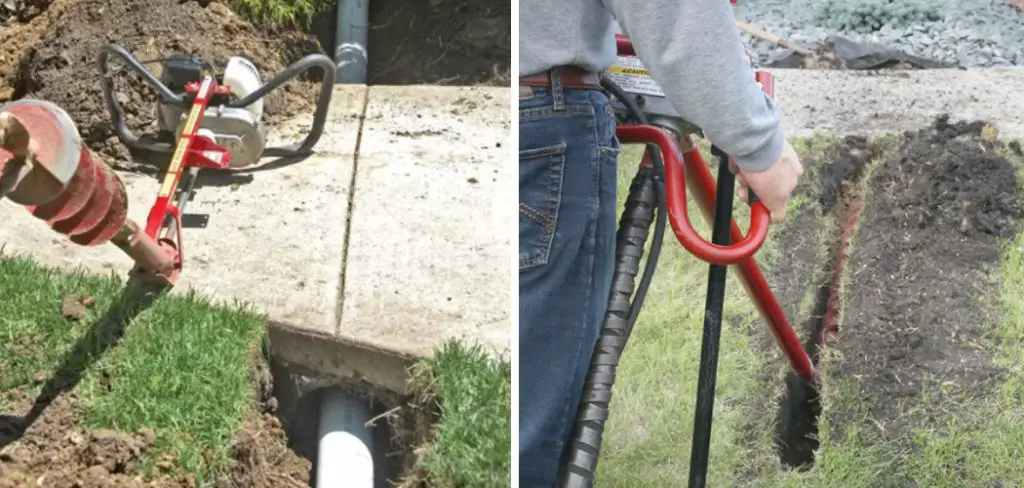
In this post on how to run conduit under driveway I’ll break down the steps to run conduit underground safely and effectively without compromising the structural integrity of your driveway. From choosing the right materials to properly locating utilities to backfilling and finishing the job, I’ll share my own experience and lessons learned from installing conduit under my driveway so you can feel empowered to take on this project yourself and complete it without major hassles.
Necessary Materials
Conduit:
Depending on the type of wires or pipes you are running, choose the appropriate conduit size and material. Popular choices include PVC, metal, or flexible plastic conduit.
Trenching Tools:
To dig a trench under your driveway, you will need a shovel, pickaxe, and spade. If your driveway is particularly thick or made of hard materials, you may need a jackhammer or concrete saw.
Measuring and Marking Tools:
A tape measure, chalk line, and spray paint can help you plan the location of your conduit and mark its path before digging.
Pipe Bending Tools (Optional):
If your conduit needs to curve underneath your driveway rather than run in a straight line, invest in a pipe bender to create smooth, gradual curves.
Backfilling Material:
Once your conduit is in place, you will need backfilling material such as sand or gravel to fill the trench and support the conduit.
12 Step-by-step Guidelines on How to Run Conduit Under Driveway
Step 1: Plan and Prepare
Before you start digging, it’s important to plan out where your conduit will be located and what type of materials you’ll need for the job. Make sure to research any local codes and regulations regarding underground wiring or plumbing before proceeding.
It’s also a good idea to contact your utility companies to mark any underground lines in the area. You may also want to invest in a conduit borer, which is specifically designed for creating holes under driveways and sidewalks.
Step 2: Measure and Mark
Using your measuring and marking tools, determine the location of your underground conduit and mark its path with spray paint or chalk. It’s important to ensure that your conduit is at least 18 inches deep and sloping downwards to allow for proper drainage.
Although conduit does not need to be buried as deep as pipes, it’s best to place it at a safe depth to avoid any accidental damage in the future.
Step 3: Dig the Trench
Using your trenching tools, carefully dig a trench along the marked path. Make sure the trench is wide enough for your conduit and deep enough to meet local codes. If you encounter any obstacles such as tree roots or large rocks, use a pickaxe to remove them.
You may also encounter a layer of compacted soil or hardpan, in which case you may need to use a jackhammer or concrete saw. But be careful not to damage your driveway in the process.
Step 4: Create a Pilot Hole
Using a conduit borer or long metal pipe, create a pilot hole at one end of the trench. This will serve as your starting point for pulling the conduit through. It’s important to ensure that the pilot hole is at least 6 inches in diameter to allow enough room for the conduit. You may need to use a sledgehammer to create the hole if your driveway is particularly thick or made of hard materials.
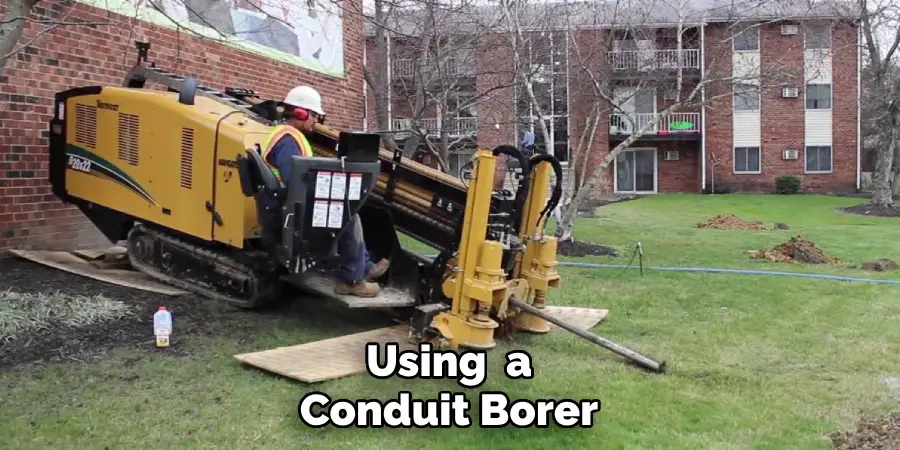
Step 5: Attach Conduit to Pull String
Tie a strong string or rope to one end of your conduit and carefully attach it with electrical tape. Make sure the connection is secure, as this will be used to pull the conduit through the pilot hole and under the driveway. But be careful not to damage the conduit in the process. it. This may require some bending or maneuvering of the conduit, so be patient and take your time to avoid any kinks or breaks.
Step 6: Pull Conduit Through
With someone holding onto the other end of the string, push the conduit through the pilot hole using a combination of pushing and pulling motions. Use caution not to kink or damage the conduit as it passes under the driveway. If necessary, have someone inside the trench gently guide the conduit to ensure it stays aligned with the path.
Step 7: Use Pipe Bender (Optional)
If your conduit needs to curve or bend under the driveway, use a pipe bender to create gradual curves rather than sharp angles. This will decrease any stress on the conduit and allow for easier pulling through the trench. It’s important to measure and mark the exact location of your bends beforehand to ensure they are in the right position.
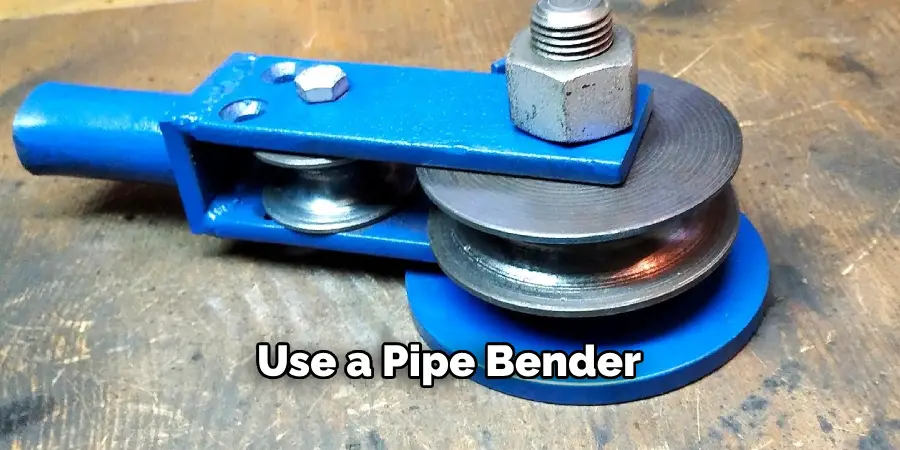
Step 8: Check for Utilities
Once your conduit is in place, use a utility locator or contact your local utility companies to ensure there are no underground line conflicts. If there are any conflicts, you may need to adjust the location of your conduit or use a different type of material. But it’s always better to check beforehand rather than risk damaging any existing utilities.
Step 9: Backfill Trench
Once you have confirmed that it is safe to proceed, use backfilling material such as sand or gravel to fill the trench and support the conduit. Be sure to compact the material as you go and leave enough room for your desired landscaping on top.
Otherwise, you may end up with an uneven driveway or cracks in the future. You can also use a level to make sure the conduit is at the proper slope and depth.
Step 10: Test Conduit
Before finishing up, test your conduit by pulling a string through it from end to end. This will ensure that there are no obstructions or kinks that could affect the flow of wires or pipes in the future. You can also use a hand-held snake camera to visually inspect the conduit for any issues. It’s better to catch and fix any problems now rather than having to dig up your driveway again in the future.
Step 11: Cover Trench
Once everything is confirmed to be in working order, cover up the trench with soil and replace any removed landscaping on top. Be sure to compact the soil as you go to prevent any future settling. It’s also a good idea to mark the location of your conduit so that it is easily identifiable in the future if needed. However, if you do plan on covering it with a driveway or walkway, make sure to include an access point for future repairs.
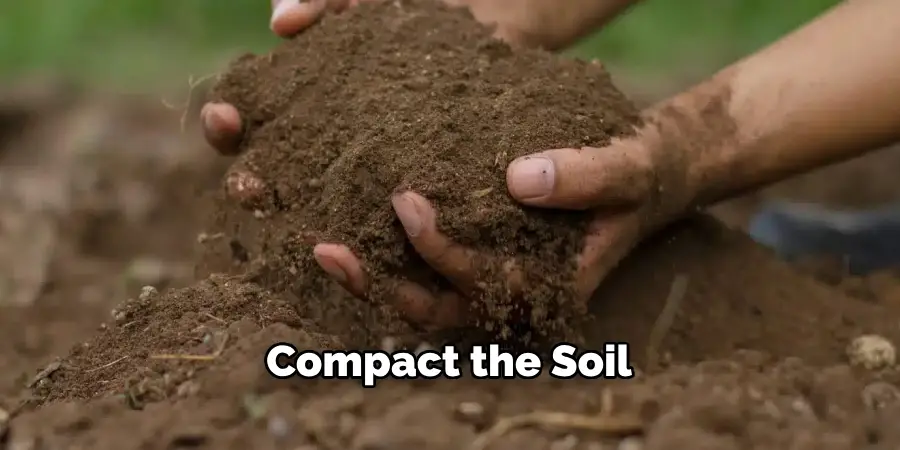
Step 12: Finishing Touches
Finally, clean up any debris and tools from the job site and restore your driveway to its original condition. With proper planning and execution, running conduit under a driveway can be a relatively straightforward and successful task. Just remember to take your time, follow safety precautions, and double-check all steps along the way to ensure a smooth outcome.
Following these steps on how to run conduit under driveway will ensure that you successfully run conduit under your driveway without any issues. Remember to always follow local codes and regulations, as well as take necessary safety precautions when handling tools and equipment. With proper planning and execution, your underground wiring or plumbing project will be a success. Happy digging!
Frequently Asked Questions
Q: Can I Run the Conduit Under a Concrete Driveway?
A: Yes, it is possible to run conduit under a concrete driveway with the proper tools and techniques. However, it may be more challenging than running conduits under softer surfaces such as grass or gravel. It’s important to use caution and take your time to avoid damaging your driveway in the process.
Q: Do I Need a Permit to Run Conduit Under My Driveway?
A: It’s always best to check with your local building or zoning department for specific permit requirements. In general, if you are running conduit under a public right-of-way or within a utility easement, you will likely need a permit. Even if it is not required by law, it’s always a good idea to obtain a permit to ensure your project is up to code and safe.
Q: How Deep Should the Conduit be Buried?
A: The depth at which you should bury your conduit will depend on local codes and the type of utility it will hold. In general, electrical conduits should be buried at least 18 inches deep, while water or gas pipes may need to be buried much deeper. Be sure to research and adhere to local regulations for the best results.
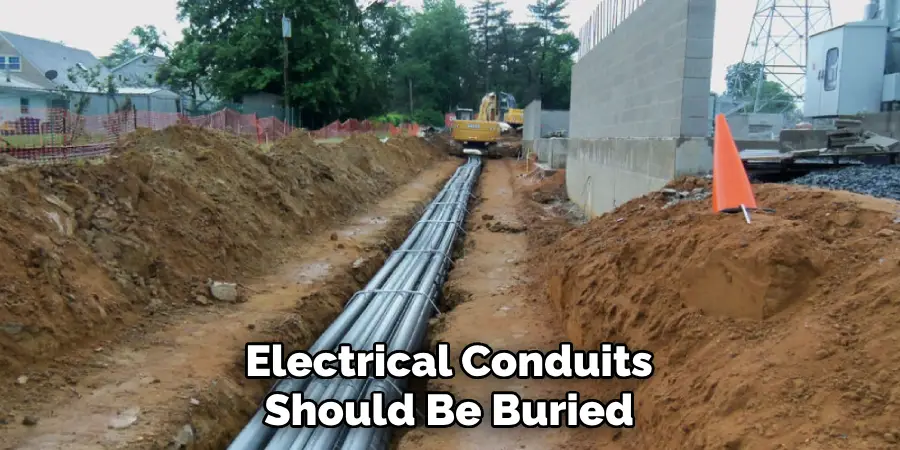
Conclusion
With all of the necessary tools and supplies, you are now prepared to begin running conduit under your driveway. After gathering all the essential equipment — wire, shovels, conduit, etc. — carefully plan your approach, measure twice before you dig and take note of any warning signs that will help protect against underground utilities. With mindfulness and precision, you can successfully run conduits under a driveway without wasting time or energy.
Plus, if there is a steep learning curve at the beginning of this project, it gets easier once you have a comprehensive understanding of how electricity works and what to expect when running tubing.
Armed with information and these tips on how to run conduit under driveway you can now confidently embark on this journey for yourself. Do not hesitate to contact an electrician if ever in doubt – they are able to provide valuable guidance throughout the process!
